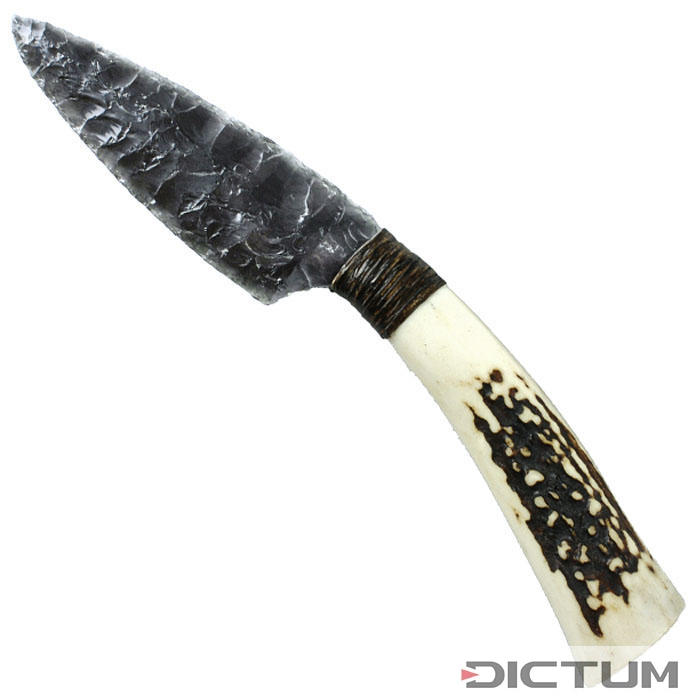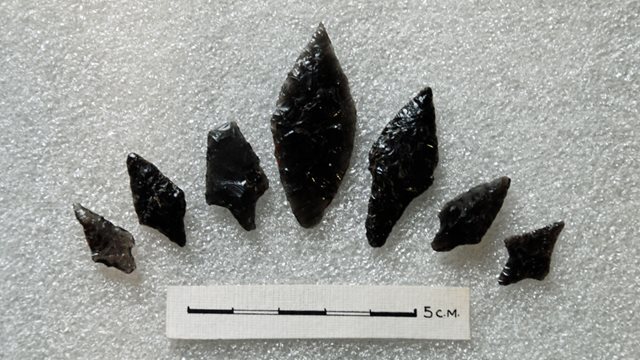Are Obsidian Knives the Sharpest in the World?
While obsidian knives may be incredibly sharp, they're not the best option for everyday use because they're not very durable and they can't stand up to the wear and tear of regular use.
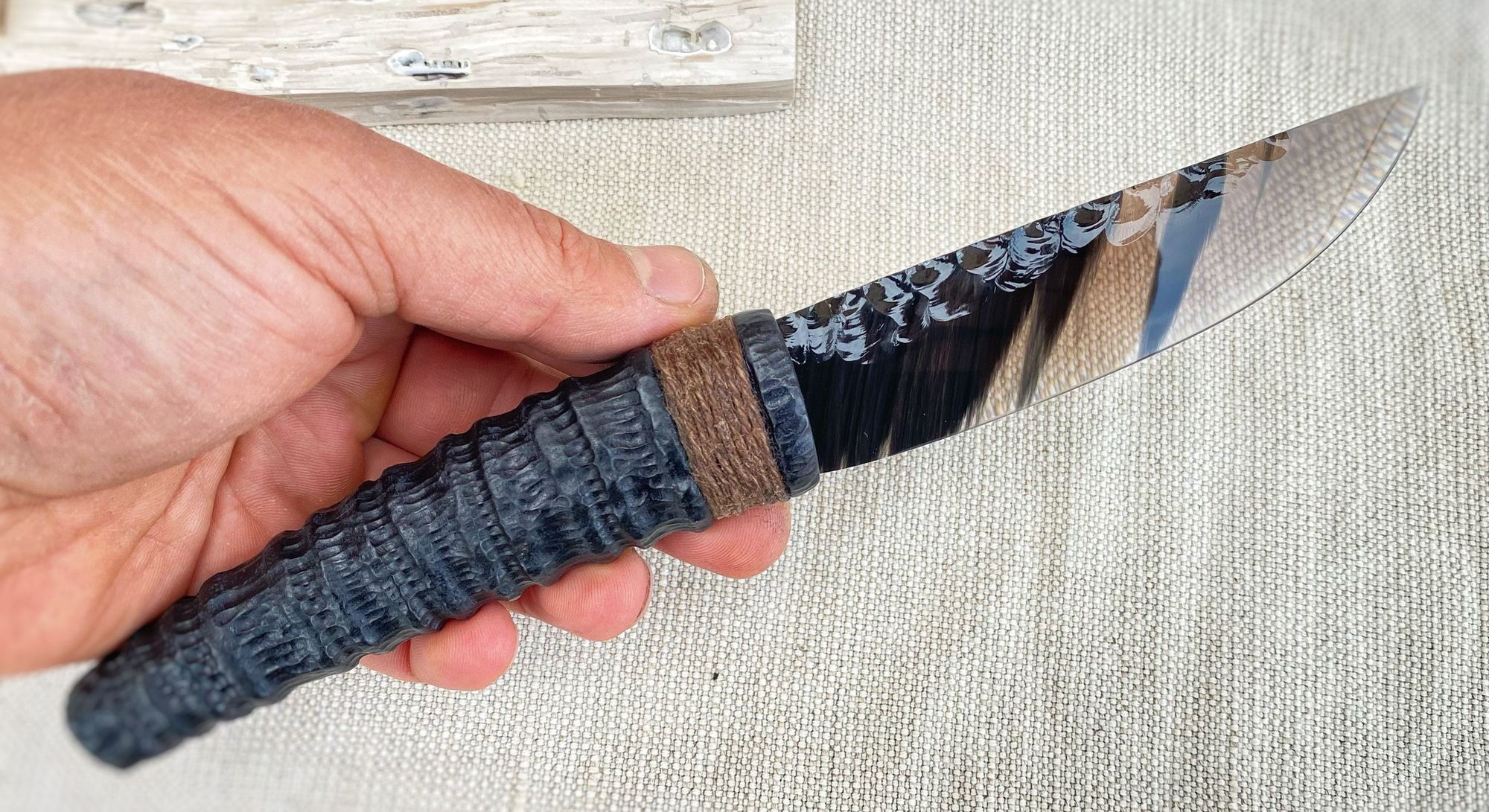
You’ve probably heard of the famed sharpness of the obsidian knife. This glass-like volcanic material is reputed to be sharper than any other material in the world and has been in use since the stone age.
But how true are these claims? Are obsidian knives really the sharpest in the world? Read on to find out what this material is and if it lives up to the hype.
What is Obsidian?
Obsidian is a natural glass that is formed by the rapid cooling of volcanic lava. In the real sense, it is a rock.
However, the particles of this rock are so tiny that it looks and exhibits properties similar to glass. The resulting material is brittle and hard and has an amorphous nature that makes it easy to carve sharp edges out of it.
What are Obsidian Blades?

Obsidian has a long history that dates back several thousand years. Since the stone age, ancient men have made arrows, swords and scalpels out of obsidian glass. Pieces of obsidian can be obtained by chipping away at the rock, and the broken piece is then sharped vigorously until the edge is smooth and sharp.
Ancient civilizations like the Aztecs and the Ainus, were particularly fond of Obsidian weapons and used them extensively. These cultures also employed them for ceremonial purposes, such as sacrificing animals or performing rites involving the letting of blood.
Even archaeological sites in Europe have produced evidence of the use of weapons fashioned from obsidian. It is most likely that they were introduced there by merchants from various cultures who traversed the world a very long time ago.
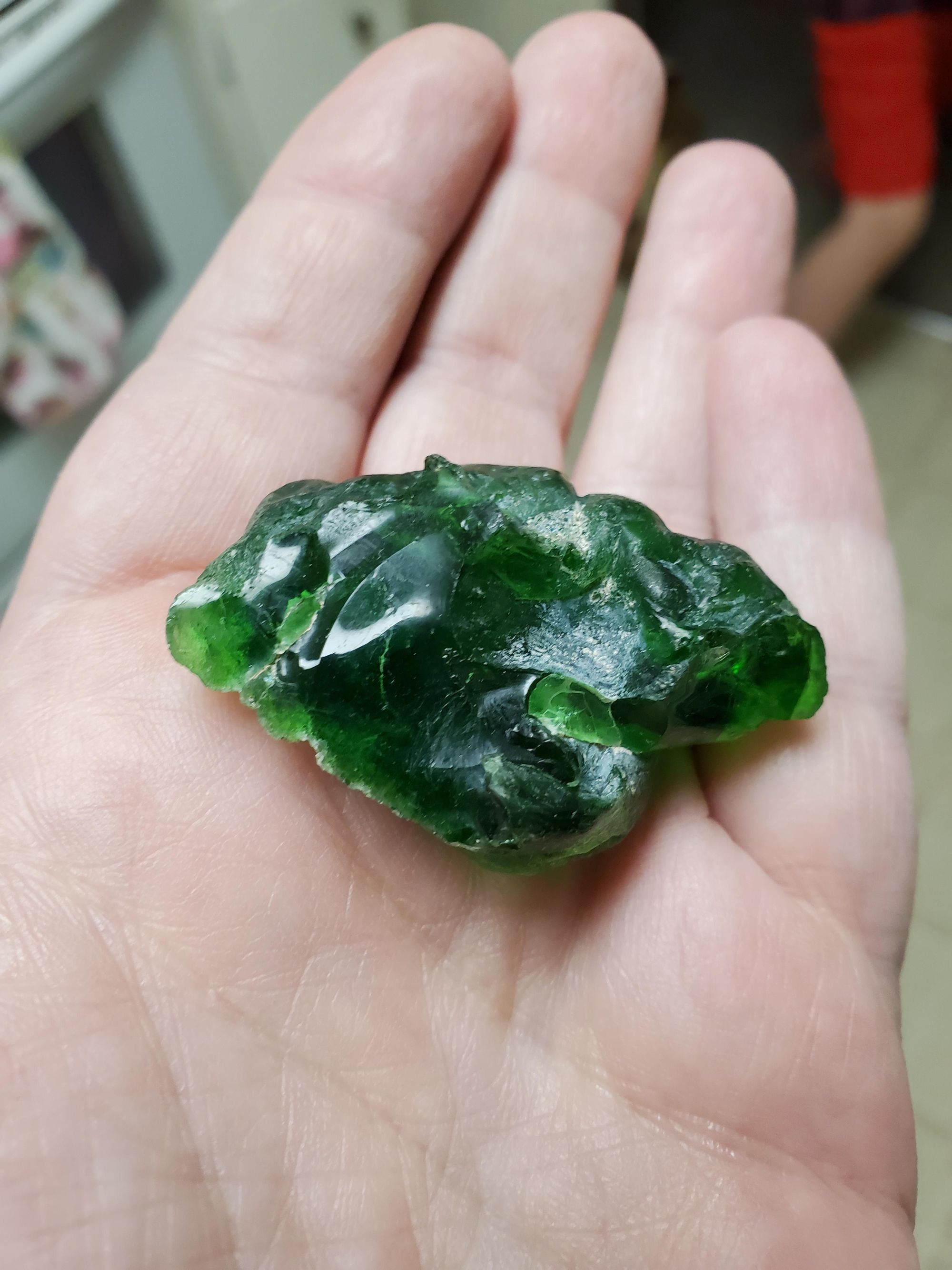
Are Obsidian Knives The Sharpest In The World?
Yes, Obsidian has been subjected to several tests and has been proven to be the sharpest material that can be carved into a blade. The sharpness of an obsidian edge is measured in angstroms, which is a unit of measurement equal to one hundred millionth of a centimeter.
So, how sharp is Obsidian?
An obsidian edge can be as fine as 30 angstroms. In comparison, most household razor blades are 300 to 600 angstroms!
You might think that diamonds are sharper than obsidian because of its reputation as the hardest material in the world, but the truth is, obsidian is way sharper. One major reason why this is so is because of the arrangement of the crystals that form these materials.
Diamond crystals are arranged in an octahedral fashion. This type of arrangement makes it difficult to carve a sharp edge out of it. However, this isn’t the case with obsidian glass, whose crystals have an amorphous arrangement which makes it easier to make sharp edges out of them.
The edge of an obsidian knife is sharpened by chipping off small flakes of the glass until the desired edge is achieved. This process is known as knapping and it allows the obsidian to be shaped into a very sharp edge, with an edge that's so thin that it could even be used in surgical procedures.
Usage of Obsidian Blades

The potential sharpness of an obsidian blade is the sole benefit it has. To be more precise, an electron microscope would reveal uneven and jagged edges on even the finest carbon steel blade. Under the same microscope, a cut made with an obsidian blade would appear flawlessly smooth and even. A measly three nanometers separate the edges of an obsidian blade. That’s more than 10 times sharper than a razor blade.
Some surgeons use obsidian scalpels for high-precision surgeries. Certain research on rats has indicated that using obsidian blades encourages speedier healing due to a cleaner cut. Surgical blades made of obsidian have not been tested on humans since the Food and Drug Administration in the United States has not given its approval for their usage.
Explaining Obsidian Arrowheads

Obsidian arrowheads are sharp, pointed projectiles that were created by many ancient cultures, one example is the Ainu people.
The Ainu are an indigenous people of Japan who have traditionally lived on the island of Hokkaido and the surrounding areas. One of their traditional skills is the art of knapping, or shaping obsidian into tools and weapons such as knives and arrowheads.
Arrowheads made from obsidian were likely used for hunting and warfare. They were prized for their sharpness and strength, as well as for the ease with which they could be knapped, or shaped, into various forms. Obsidian arrowheads are typically black in color, hence the name "Black Obsidian arrowheads", but can also be found in other colours like dark green, brown, and red based on the mineral inclusions.
In Hokkaido, obsidian was traditionally used to make these tools for hunting and domestic activities much the same way as flint was used in Ireland.
This practice was particularly prevalent during the Jōmon period (Japanese-Neolithic), where the people of the time were primarily hunter-gatherers rather than farmers. Today, these arrowheads can still pierce flesh. A testament to how sharp they were!
Why don't we use obsidian knives today?
Obsidian knives were widely used in ancient times, but they have largely been replaced by other types of knives in modern times. There are several reasons for this:
- Brittleness: Obsidian is a brittle material, meaning that it can break or chip easily if not handled properly. The trade-off in knife blade materials is between sharpness and toughness. Obsidian blades are extremely sharp but can chip easily when used to chop or hack hard food iterms as it will not be able to handle the impact force and it will more likely break.
- Steel knives: Steel knives are now widely available and are much more durable than obsidian knives. They are less prone to chipping and breaking, and they can be sharpened to a much finer edge than obsidian knives. They also stay sharp longer and can withstand more abuse than an obsidian blade.
- Industrial production: The industrial production of knives made of steel or other materials allows for mass production and a greater variety of knives, meaning that knives can be made to order for specific tasks and can be mass-produced at a lower cost than the hand-crafted obsidian knives.
- Limitations: Obsidian knives are more suitable for precision cutting tasks on softer items for example for skinning, carving or slicing meat/onions/fish etc.
Can obsidian knife cut bone?
No, Obsidian cannot cut through bone. Obsidian is a very brittle material and it will not be able to handle the impact force.
It's worth noting that there are more specialized knives and tools for cutting bones, like saws and bone shears that are made of harder materials than obsidian and are designed to handle the stress of cutting bones.
Do some surgeons use Obsidian scalpels?
Obsidian scalpels have been used in the past for surgical procedures, due to their ability to produce a very sharp and precise cutting edge.
However, with the development of modern surgical techniques and equipment, obsidian scalpels are no longer commonly used in surgical procedures. Stainless steel scalpels, which are cheaper and more durable, have largely replaced obsidian scalpels in modern surgical practice.
Also, extra sharp cutting instruments like Obsidian provide less tactile feedback, making it more likely to accidentally cut through unintended structures or neurovascular bundles while performing surgical procedures. This is one of the reasons why the FDA (The United States Food and Drug Administration) banned the use of Obsidian scapels on humans.
Obsidian scalpels may still be used in some traditional and alternative medicine practices, and in certain specialized procedures where the use of obsidian can have advantages. But in modern surgery, obsidian scalpels have been replaced by other materials that are safer, more durable and easier to sterilize.
Is Obsidian sharper than steel?
Yes, Obsidian can be sharper than steel, in terms of the fineness of its edge. Obsidian blades are extremely thin, measuring only 3 nanometers, which allows them to cut between cells during surgical procedures. In contrast, stainless steel scalpels are much thicker at 0.4 millimeters and tear through cells, resulting in scarring after surgery.
Are Obsidian knives still maufactured today?
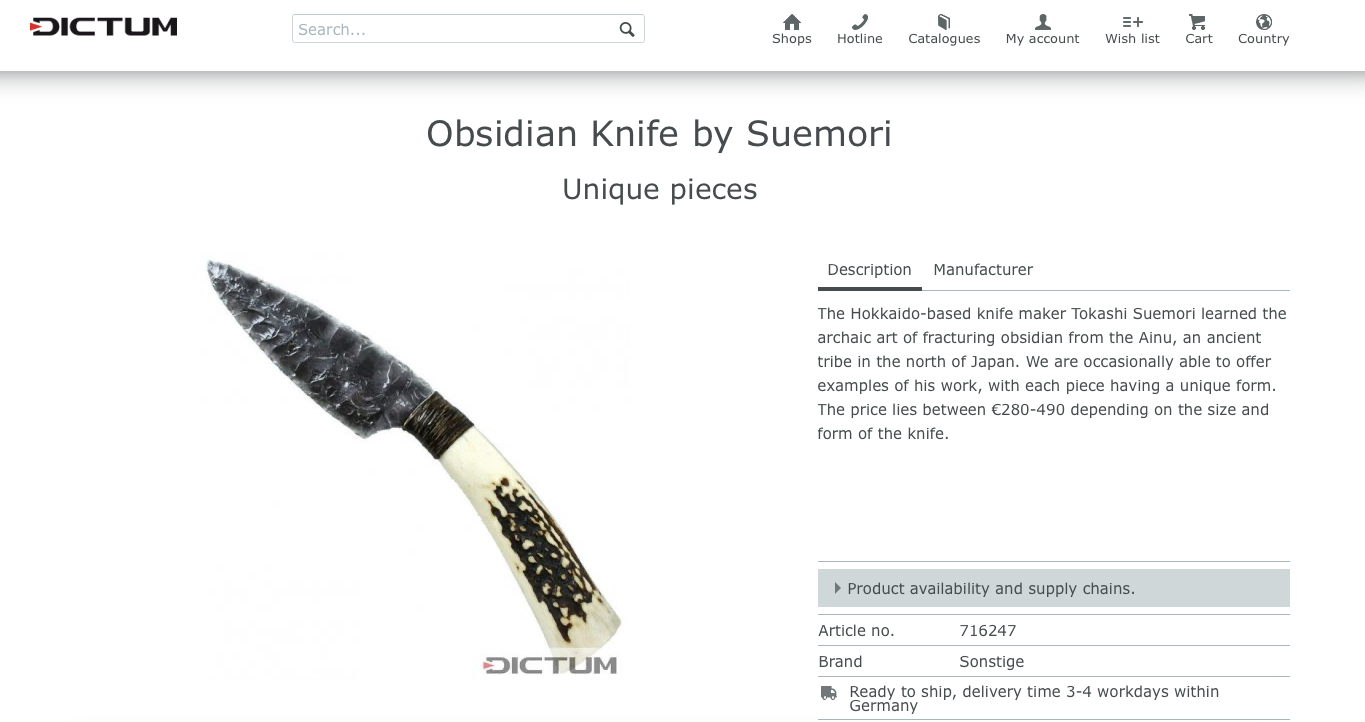
Surprisingly yes, although its seen as more of a collector's item than an actual knife because of its fragility. However, make no mistake, an Obsidian knife is sharp enough to rip through human flesh so precisely that you wouldn't even feel the initial swipe.
Tokashi Suemori is a knife maker based in Hokkaido who learned the ancient art of knapping obsidian from the Ainu people. He creates knives and tools with razor-sharp edges and they are highly valued for their sharpness, durability and beauty.
He is one of the few modern makers who still practice this ancient art of manufacturing Obsidian knives.
You can find other sellers of Obsidian knives on Etsy too!
Conclusion
Obsidian is a good material for knives and has been used for thousands of years to make cutting tools because of its sharpness, durability, and availability. But it's important to be aware of its fragility and to know that it's not the best choice for heavy duty tasks.
So, while obsidian knives may be incredibly sharp, they're not the best option for everyday use because they're not very durable and they can't stand up to the wear and tear of regular use.
If you really want to have an Obsidian knife, you can get one but you can't use it for hard tasks. It's basically a special purpose knife.
References:
